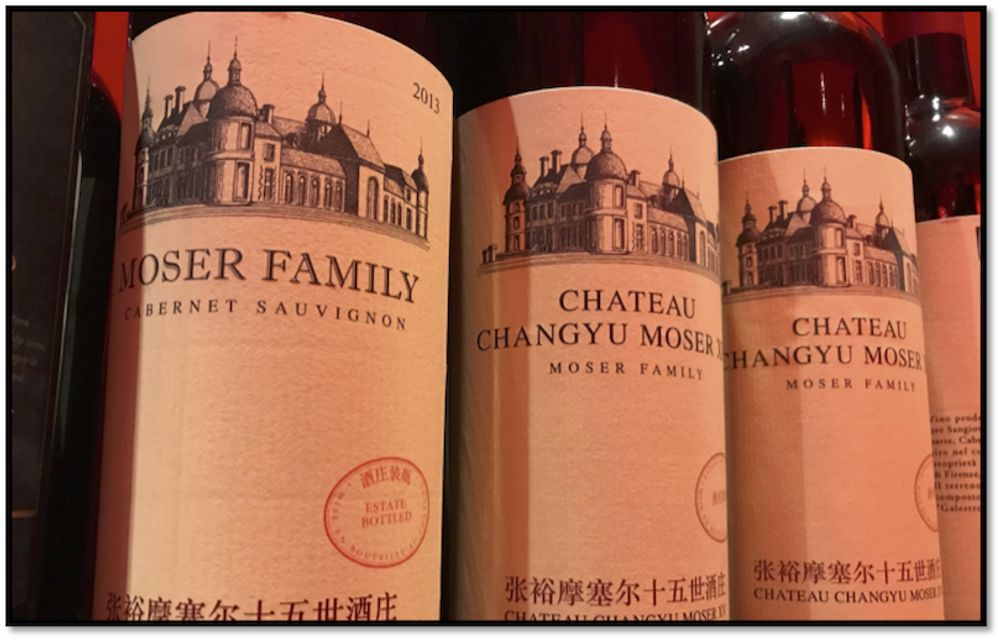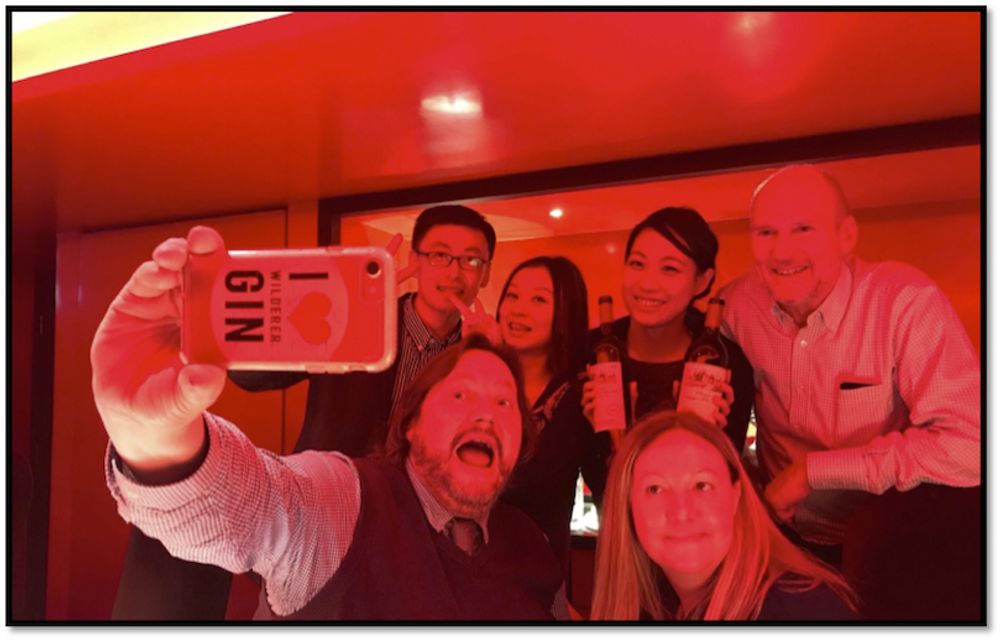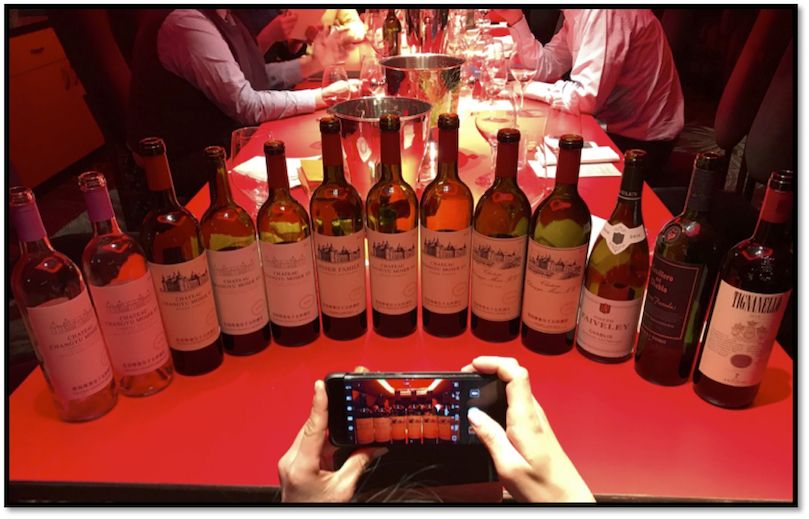When Chinese wine gets it right it can have spectacular results such as one of the wines from Château Changyu Moser which is strictly on allocation… all 600,000 bottles of it!
One of top nights of last year was spending it with Lenz Moser, whose joint venture at Château Changyu Moser was a real education for me about the potential of Chinese wine.
I actually had one of the wines as one of my favourites of the year in my year-end article for The Buyer, mostly because it properly peaked my interest. I knew ‘next to jack shit’ about the wines of China. I’d had a bit of a pop in the past about LVMH’s Ao Yun (beautiful wine, ridiculous price), and a comment on the very interesting but tough-sell-to-the-public Taste the Difference white and red from Sainsbury’s (funnily enough actually made by Changyu Moser), but that’s about it. So to get to spend an evening in the company of Austrian wine royalty, Lenz Moser, as he presented the wines of his joint venture in China was a real treat.
The background of Château Changyu Moser

Lenz Moser
Lenz Moser is the 15thgeneration of Mosers to be in the wine trade, a family tradition going back to the 16thcentury. 15 years ago a friend told him he needed to head out to China and check out the potential in China’s fledgling wine regions, and that was it, he’s still there. What followed in 2013 was a pioneering relationship between the Changyu and Moser families, with Lenz heading back five or six times a year splitting his time between Château Changyu Moser and some consultancy work across the globe.
Originally the plan was to become the number one wine in China. As Lenz pointed out, “at the time that wasn’t difficult, but year on year domestic competition is increasing considerably.” It was five years ago, however, that CEO Mr Cho looked to unleash the full potential of the relationship between the vines and Lenz’s vinous nowse. He told Lenz to “go make your own wines.”
The wines of Château Change Moser

Lenz split the production into targeted ranges of wines. Along came the Helan Mountain Range, the Family Range, and the high-end Grand Vin.
Ningxia has a dry, continental climate, with altitude of over 1000m above sea level providing a large diurnal range between day and night temperatures, and big swings between temperatures in the summer and winter months. The result is a long ripening period for the Cabernet Sauvignon, that even when perfectly ripe, retains the telltale Cabernet green pepper notes.
The toughest issue in the cellar is what to do with the tannins. The grapes are small with thick skins, meaning chewy tannin is a constant issue. Lenz turned to French oak barrels, mostly new, in order to add sweet spice to the fruit and smooth out those otherwise harsh tannins. The red Cabernet Sauvignons are full of flavour, and age well, very much in the Bordeaux style.
I say the “red” Cabernets, because the most interesting wine for me was the Blanc de Noir Cabernet Sauvignon. This came about as Lenz wanted a white wine for the range, but was faced with a vineyard full of red varieties and a country full of red wine drinkers. The solution was to make a ‘white’ wine that red drinkers would love. It’s low in acidity, with massive hits of strawberry, lychee, and cherry blossom. To say it’s unusual is an understatement, but that doesn’t make it bad, on the contrary. Open your mind to the food-pairing possibilities and you’re over half way there. They currently make 600,000 bottles of this a year and it’s become so popular in China that it’s now on allocation. 600,000 bottles. On allocation only. Just let that sink in for a minute!
The practicalities of making wine in Ningxia
Every wine-making country in the world has funny little practical issues that you wouldn’t really think about unless someone told you. I remember visiting Romania around harvest time and seeing all these little old ladies doing the harvesting because all the young boys and girls are getting paid five times as much to head off to harvest the vineyards of France and Germany. You know, those little issues that wine producers have to deal with in order to get grapes off the vine and wine in the bottle.
For Lenz and the team at Château Changyu Moser, it’s once again all about staff at harvest time. The first few vintages they did together were all picked way too early in Lenz’s view. Problem was that they had to finish the harvest before the Moon Festival when all the workers would bugger off home to their families. It wasn’t until 2015 when cloud cover had delayed harvest by two weeks that people twigged on the joys of harvesting and making wines out of riper grapes. It’s still a battle with temporary harvest staff on the timings, but a battle they’re slowly winning.
The international growth of Chinese wines

Funny one really this. I wasn’t around in the 1970s, not just that I wasn’t in the wine trade, I wasn’t born yet, so I’m just on the outside looking in here, but China is sort of where I’d imagine California was 40 or 50 years ago. Both China and the USA are net importers of wine, with China having 21 cities of eight million people or more, so they’ve got no reason to export anything other than for international recognition.
In terms of marketing however, Lenz is clearly caught on this. He’s a savvy businessman by all means, but first and foremost he’s all about the wine. He dropped a cheeky Robert Mondavi quote in there, hailing back to the comparison with Californian wine’s efforts to go global all those years ago, that “forget the bullshit, it’s what goes into the glass that matters.” A great line, but he and I and you all know you’ve got to have both.
Slight issue here is that no-one in the wine world really cares massively about adding Chinese wines to their lists, so they’ve got to be proactive and get out there and push it. So it’s a big boon to see numbers of Chinese vineyards at ProWein (Europe’s biggest international wine trade show) on the rise, from just one in 2017, up to 4 in 2018, and a mighty 15 in 2019. There is more to come.
It’s exciting times to be in the mix in Chinese wine.
Cheers
The wines of Château Changyu Moser are brought into the UK by Bibendum
If you wish to find out more about Chinese wine make sure you check out Janet Wang’s excellent book The Chinese Wine Renaissance here
Mike Turner is a freelance wine writer, a regular contributor to The Buyer, blogger at Please Bring Me My Wine, web designer for the wine industry, and director of the online wine shop Feel Good Grapes































